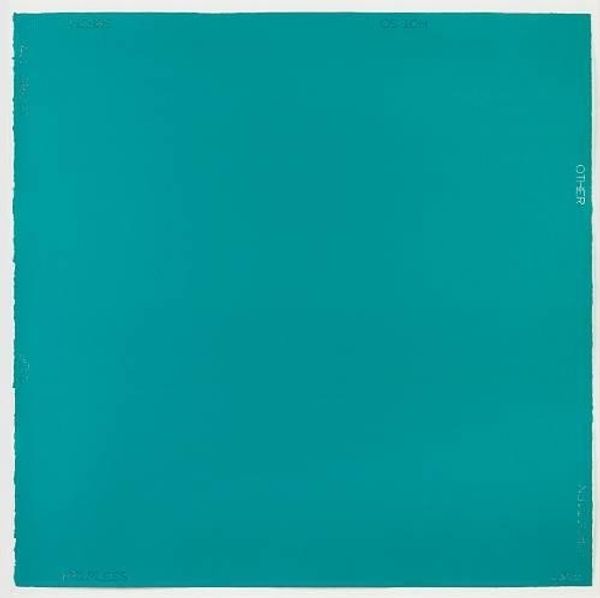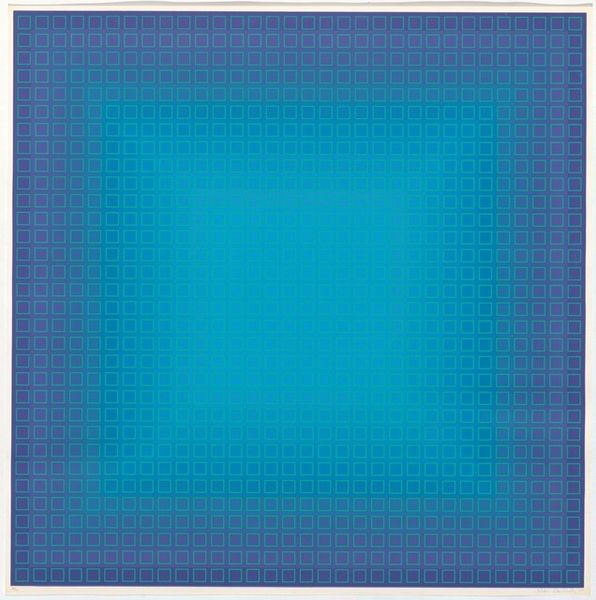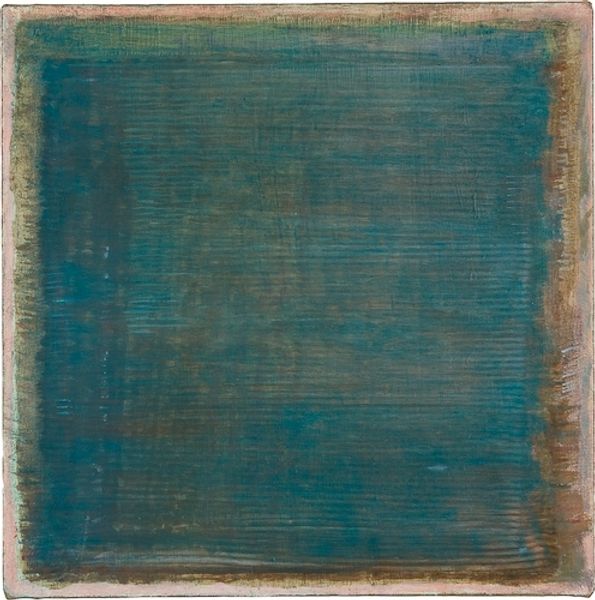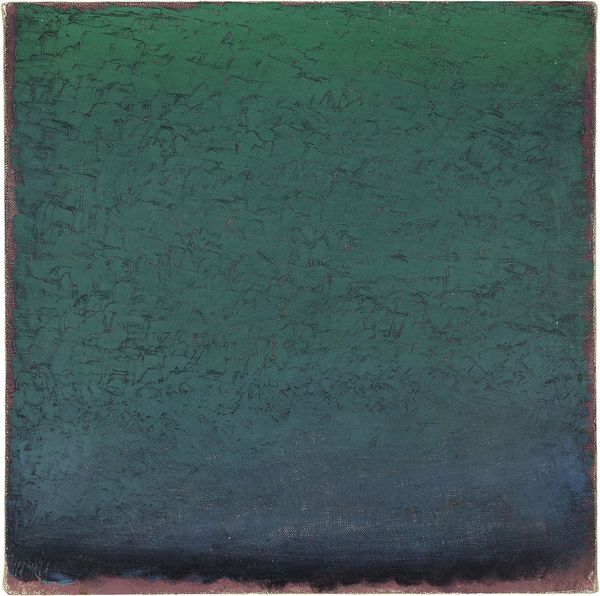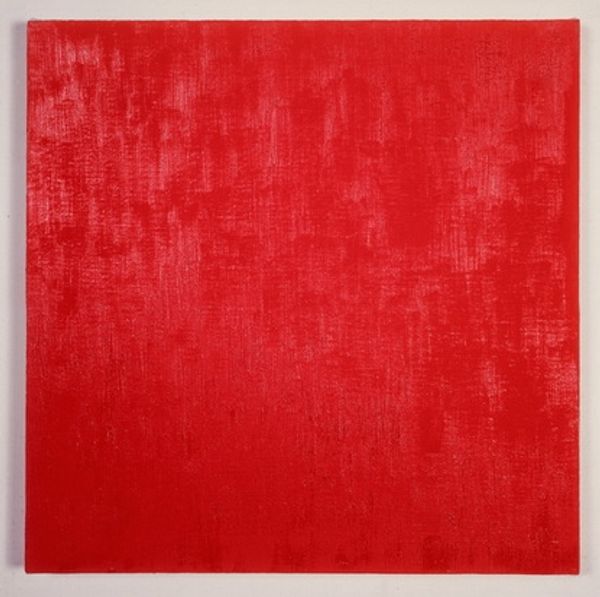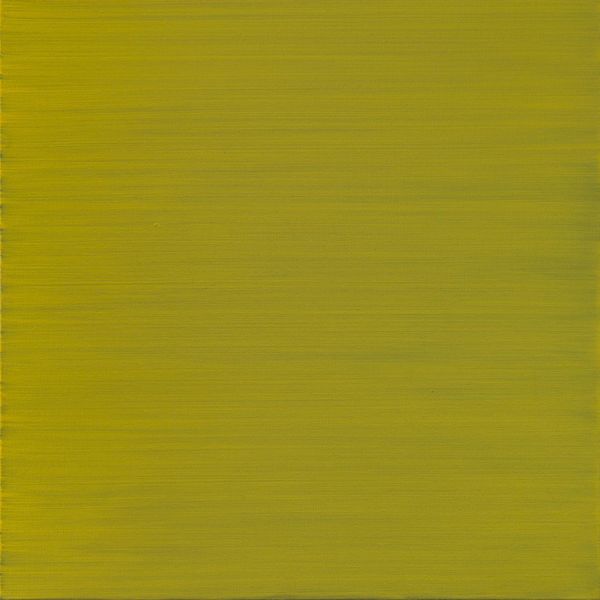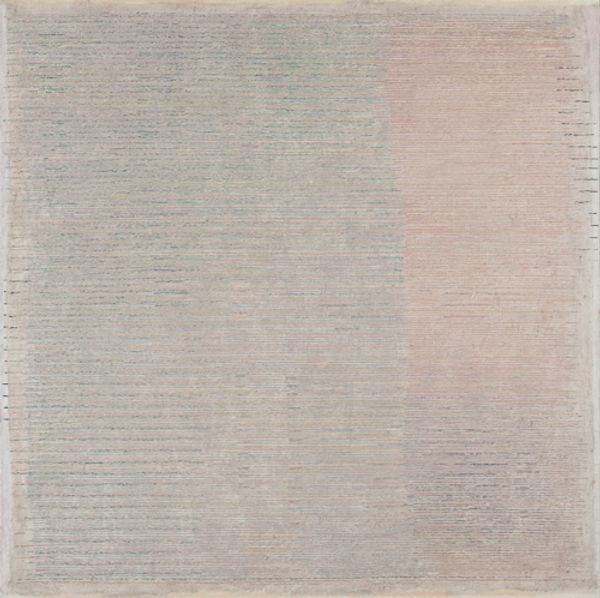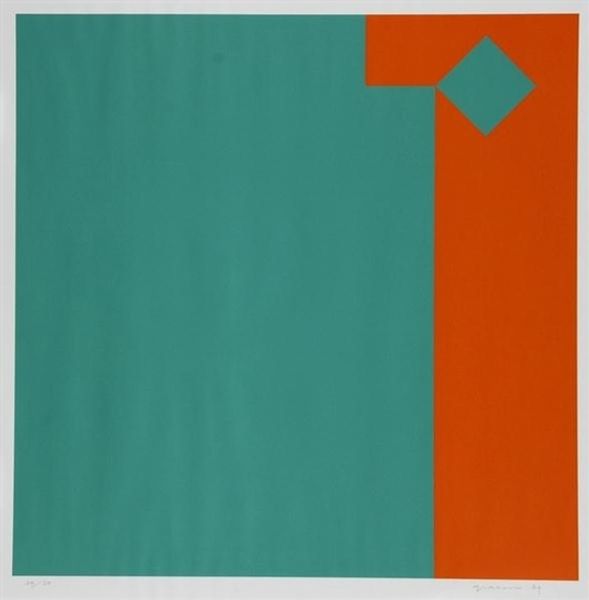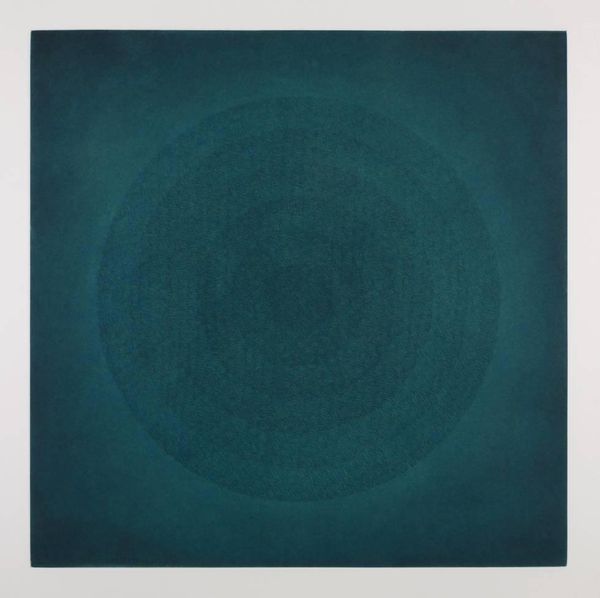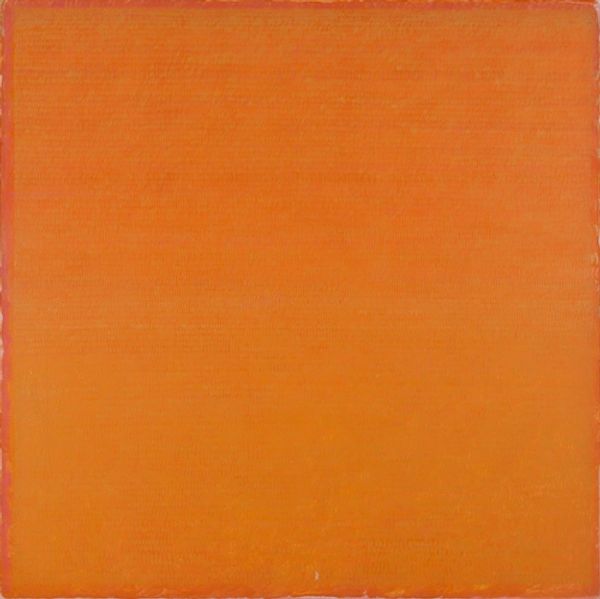
Copyright: Warren Rohrer,Fair Use
Curator: This is Warren Rohrer's "Apple 3," created in 1975. He used acrylic paint, applying it with what looks like impasto techniques. What's your initial take? Editor: Immediately, the textured surface and vibrant green evokes a feeling of calm and serenity. The horizontal lines remind me of plowed fields or perhaps even woven textiles. It is a pretty big departure from many traditional abstract expressionists. Curator: Absolutely. It’s interesting to consider the title—"Apple 3"—does it suggest a progression? Was he consciously iterating on a theme? Or could there be a link between his abstract horizontal textures and his family's farming history. He was very involved in a Mennonite community in Lancaster. I would like to study some of his previous paintings in order to appreciate his growth as an artist. Editor: That agrarian connection resonates. Knowing his background definitely alters my reading. Also the production methods come into play here too: the repetitive, almost mechanical application of paint suggests a deliberate distancing from the purely gestural mode of abstract expressionism that it’s tagged under, raising questions about labor and artistic production itself. I would guess that he employed custom-made tools to deliver some of the patterns observed here. Curator: Interesting point. Perhaps Rohrer was intentionally referencing industrial processes while simultaneously nodding towards organic forms, prompting a dialogue on artistic traditions within an increasingly mechanized world. His relationship with the museum scene probably wasn't as strained, in my mind, since it received wide praise throughout the artistic community, with several features in newspapers at the time of release. Editor: It becomes less about raw emotion and more about… meditation on materiality and process. Curator: Exactly. He transformed an ordinary subject, if "Apple 3" hints at an apple orchard at all, into a meditation on labor, technique, and tradition within the context of the changing landscape of American art and life. Editor: Thinking about the broader shift in art institutions during that period...this piece acts as a signifier of a period, while still asking essential questions about how artistic meaning and reception can also be tied directly to process. Curator: An essential viewing. Thanks for your perspective. Editor: Likewise. A rewarding and insightful exchange, certainly worth the reflective journey.
Comments
No comments
Be the first to comment and join the conversation on the ultimate creative platform.
